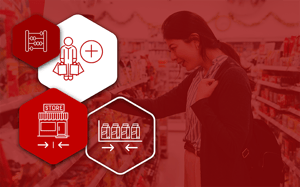Regardless of the products you sell or your store format, as a retailer, you’ll face challenges that you need to overcome. Of course, the type of challenges you face depends on your retail business. Take convenience stores, for example. Most challenges you face are different from that of FMCG or clothing stores. You’d thus need to find specific solutions that can help you.
That’s where this article comes in. Below, we’ll touch on those challenges that convenience stores must face head-on. Not only that, but we’ll also offer you a few solutions to overcome them and help you to improve your business.
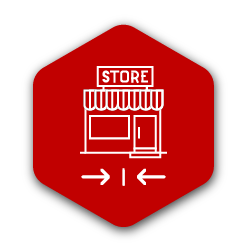
Challenge: You have a limited store size
The first major challenge is your store size.
Consider this: the average American convenience store has a sales area of around 255 square meters while a store at a filling station, regardless of country or location, has significantly less.
What’s more, your floor space has a direct influence over other sections of your business.
For example, the size of your store affects what type of products you stock and how many. We’ll touch on how to overcome that later in this piece. It also has an impact on how you decide to layout your store.
So how can you overcome the challenge and maximise your store size? Fortunately, you have a few options.
For one, you can use floor planning tools to plan and optimise your macro space. With it, you can ensure that you lay out your products across your store for maximising exposure and sales. Of course, you need to be careful that you don’t overstuff your store or lay it out so that it’s difficult to shop.
Considering the size of your store, the problem of floor congestion would cause additional issues. It would have a more significant impact on your store than that of a larger retailer.
Alongside the need for floor planning tools is the need for space planning. It’s worth running your gondolas vertically and horizontally to see what works best for the flow of your store. For example, have the aisles running vertically as your shoppers enter your store to enter into runs and flow into the fridges at the back of your store.
More than that, it’s also critical to continuously report on your top and bottom performing lines. By choosing KVI’s per category, you can ensure you have the right assortment in-store at all times. You can do that by monitoring your retail data, both current and historical.
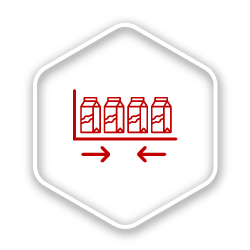
Challenge: Your store size influences the products you stock
As mentioned above, the size of your store space has a direct impact on the type of products you stock as well as the quantity. That’s why you need to be strategic about which products to stock in your store.
As for how you can overcome this particular challenge, one approach is to do market research.
Here, you’d want to understand what assortments are working for you, for the market in general, and how it can benefit you. If there is a product you don’t stock and you should, you can find it in the data. It’s worth speaking to your suppliers and getting them involved. After all, they will have access to market data that you can’t get.
With their involvement, they can assist you by providing insight into their best performing SKUs and suggest those items that you should stock to keep in line with the general market. In this instance, it’s also worth looking at historical retail data to see what’s selling. From there, you can decide on stocking more of your top performers.
Then you’d also need to consider the geographical location of your store and base your range off your target market for that area.
Let’s say, for example, that you find that your target market is buying more of product A than product B or C, which are all different variations of a single product. The obvious result should be to stock more of product A and consider removing Product B and C from your range to fully optimise your selling space.
Because of your store size, it’s better to carry one or two variations of a single product than a wide variety. If product C is the worst performer, you can cut that item out of your range.
If you want to carry more variations, rather consider your data to ensure that you’re not carrying a product for the sake of it.
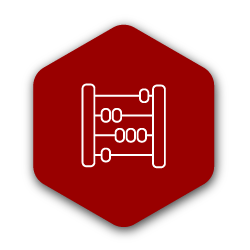
Challenge: Find a balance between a convenient range and the right pricing
As a convenience retailer, you’re known for charging higher prices. The reasoning is sound when you consider that you have smaller quantities of stock, which you buy at higher prices from wholesalers and you have higher overhead costs when considering your extended operating hours.
However, that doesn’t mean that you don’t need to find a balance. Yes, you have the right to charge higher prices. But with increased competition from other larger retailers who can afford to undercut you, you need to be careful.
One way of combating this is to include specials wherever possible. In this instance, getting your suppliers involved is also worth considering. They are usually willing to work with you to make these kinds of specials worthwhile for everyone, be that yourself and your customers.
Here, you could choose a popular brand and charge a premium price for it. Then, pick an economy brand that you can offer for a good value and package them together.
On the other hand, you could consider lowering the price point for regularly bought categories and products. Doing so encourages your customers to shop for these items at your store. You would also consider giving these categories a traffic building strategy and loss leader pricing.
Then, on any categories that are not frequently bought, you could look at giving them a transaction building strategy. We’ll touch on this strategy later on in this article.
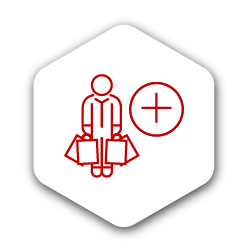
Challenge: Convince customers to purchase more
Alongside the limits of your store space, its influence on the products you can stock and the challenge of balancing your range with your pricing is another pressing challenge.
That is the challenge to convince your customers to purchase more when they shop at your store. Because they’re coming to your store for convenience, they’re likely coming for the bare staples. But how can you persuade these shoppers to buy more than bread and milk?
For one, you can use the transaction building strategy that we mentioned earlier. As part of this strategy, you’d focus on stocking impulse purchases. While these products are usually those that your customers would pick up as afterthoughts, you can also stock products that complement those they usually purchase while at your store.
Then with pricing, you could follow a loss leader or odd pricing strategy for your impulse purchases. Meanwhile, you could price your niche items higher.
When it comes to product placement, it’s worth considering setting up displays and placing those in easy to reach areas. That could include on gondola ends or in high-trafficking areas of your store.
You could place items on promotion. For example, a pie and a coke is a popular promotional item at any convenience store at a petrol station. Another example could be to offer a 2-for-1 special. Or even a package deal such as a coke, a package of chips and a bar of chocolate.
Besides the above, it is also worth spreading out your high-traffic categories across your store. Doing so exposes your customers to more of your product. That’s why placing your fridges at the back of your stores is such an effective tactic. As they walk to pick up milk, they’ll pass all the other products you stock. And as they do, they’ll remember they need something.
Conclusion
DotActiv offers category management solutions for convenience retailers. Need help creating data-driven assortment and space plans that serve your customers’ needs while maximising the sales of your retail space? Click here to find out more or here to get a 14-day trial of any edition of DotActiv software.


